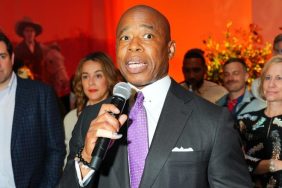Photo: Raft, New York Botanical Garden, 1950.
In 1949, New York City began to take its place as the global capital of the world in the wake of World War II. MGM was quick to capitalize on this with the classic propaganda film Mighty Manhattan, New York’s Wonder City, released that year. With a solid foundation in place, the time was ripe for an infrastructure expansion so potent, city planner Robert Moses stayed licking his lips.
Also: Summer is the Perfect Time to Visit “Coney Island”
Let’s call him what Robert Moses was: the Godfather of Gentrification. A “master builder” who reconfigured an historic city and developed its suburbs as a means to achieve de facto segregation, Moses simultaneously held twelve titles, he was never elected to any public office, maintaining one of the most insidious paths to power the nation has ever seen.

Children on United Nations Construction Pile, 1951
After World War II, his power increased, as he assumed even more control, being the sole authority empowered to negotiate in Washington, D.C., for New York City projects. He operated with autonomy from the public as well as elected officials. His self-created authority gave him Moses was a totalitarian figure, one that was left unchecked, in as much as his goals represented that of the powers-that-be themselves.
This is best achieved by taking things out of context, of looking at things as though they have no history by which to consider them. Perhaps that’s a natural human response; the truth is a heavy and many people feel easily overwhelmed by the facts. And so perhaps this is one of the many purposes of art: to act as a bridge between the present and the past. It’s offers a starting point, and in doing so there is limitless space for consideration of that which you did not previously know.

Boy on Rooftop, 1951
The New-York Historical Society Museum & Library understands this. Founded in 1804, its museum is the oldest in New York City, with holdings that comprise more than 1.6 million works. It is a quiet paradise for anyone enamored of the history of the city that never sleeps, providing a richly layered political, cultural, and social history of the five boroughs, and their relationship to the state and to the nation. Truly it is this: a repository for the greatest city on earth.
Currently on view through December 1, 2016, Photographs by Larry Silver, 1949-1955 showcases 45 photographs taken of New York during a pivotal era in history. Born in the Bronx in 1934, Silver took up photography while attending the High School of Industrial Art in Manhattan. Do the math an it all adds up: he started taking these photographs at the age of 16, capturing the daily life of the city and its residents. His is the New York of regular folk, when it was a place where working class people and immigrants could afford to live. Silver’s work offers an glimpse of an Edenic vision that the nostalgically minded refer to as “the good old days.”

Manhattan Backyard, 1952.
Except they’re not that; they are simply this: a key turning point in the city’s history. This is the city that Moses destroyed, and if not for evidence like these photographs, we’d only have a whitewashed version of the truth.
All photos: ©Larry Silver, Gelatin silver print. Gift of William and Jeryl Silverstein. Collection of the New-York Historical Society.
Miss Rosen is a New York-based writer, curator, and brand strategist. There is nothing she adores so much as photography and books. A small part of her wishes she had a proper library, like in the game of Clue. Then she could blaze and write soliloquies to her in and out of print loves.








